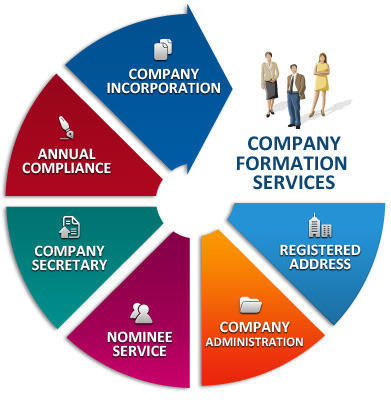C Corporations
The standard corporation, also called a C corporation, is a very common business structure.
Corporations are separate legal entities that are owned by shareholders. Conversely, sole proprietorships and partnerships are not separate legal entities. They are considered to be the same as the owner(s). In order to form a corporation, the appropriate formation documents, usually called the articles of incorporation or a certificate of incorporation, must be filed with the state and the state filing fees be paid.
The primary advantage of incorporating a business is the limited liability the corporate entity affords its shareholders. Typically, shareholders are not personally liable for the debts and obligations of the corporation; thus, creditors will not come knocking at the door of a shareholder to pay debts owed by the corporation. In a partnership or sole proprietorship the owner’s personal assets may be used to pay debts of the business.
Corporations are separate legal entities that are owned by shareholders. Conversely, sole proprietorships and partnerships are not separate legal entities. They are considered to be the same as the owner(s). In order to form a corporation, the appropriate formation documents, usually called the articles of incorporation or a certificate of incorporation, must be filed with the state and the state filing fees be paid.
The primary advantage of incorporating a business is the limited liability the corporate entity affords its shareholders. Typically, shareholders are not personally liable for the debts and obligations of the corporation; thus, creditors will not come knocking at the door of a shareholder to pay debts owed by the corporation. In a partnership or sole proprietorship the owner’s personal assets may be used to pay debts of the business.
 Other advantages of incorporating a business include:
Other advantages of incorporating a business include:- Incorporating may establish credibility for a new business with potential customers, employees, vendors, and partners.
- The ownership of a corporation is easily transferable through the sale of stock.
- Corporations have unlimited life extending beyond the illness or death of owners.
- Certain expenses, such as insurance, travel, and qualified retirement plans are typically tax-deductible.
- Additional capital can be easily raised through the sale of stock (shares) in a corporation.
The main disadvantage to forming a C corporation is often considered to be the potential for double taxation. C corporations are considered separately taxable entities by the Internal Revenue Service (IRS), and taxes must be paid on the profits of the corporation. If a corporation then distributes its profits to shareholders in the form of dividends, the dividend income is also taxed as regular income to the shareholders. In this case, the corporation’s profits are taxed twice, first as income to the corporation and second as dividend income to the shareholder, creating the “double-tax.”
However, not all income a shareholder receives from a C corporation is subject to the double tax. For example, if the shareholder is also an employee of the corporation, that shareholder will most likely receive a salary payment from the corporation. As long as the salary paid to the shareholder is considered by the IRS to be reasonable (or similar to the market salary rates for that position), it is treated as a business expense and is deductible to the corporation. This helps reduce the amount of taxable income the corporation has.
In order to eliminate the possibility of double taxation, C corporations can elect to be taxed as an S corporation with the IRS. With S corporations, the profits and losses of the corporation are reported on the individual tax returns of the shareholders, and any necessary tax is paid at the individual level. This taxation method is called "pass-through" taxation, since the profit or loss of the corporation is passed through to the shareholders.
Other aspects of C corporations that can be considered disadvantages include:
When evaluating whether the corporate structure is right for your particular business, it is advisable to first determine the goals of your business, and then to assess the advantages and potential disadvantages of the different business structures in relation to those goals. You may also wish to seek the advice of an attorney or accountant.Corporations are more expensive to form than sole proprietorships and partnerships.
- Corporations are more expensive to form than sole proprietorships and partnerships.
- There are more corporate formalities, such as annual paperwork, and more state and federal rules and regulations, than with sole proprietorships and general partnerships.
When evaluating whether the corporate structure is right for your particular business, it is advisable to first determine the goals of your business, and then to assess the advantages and potential disadvantages of the different business structures in relation to those goals. You may also wish to seek the advice of an attorney or accountant.Corporations are more expensive to form than sole proprietorships and partnerships.
